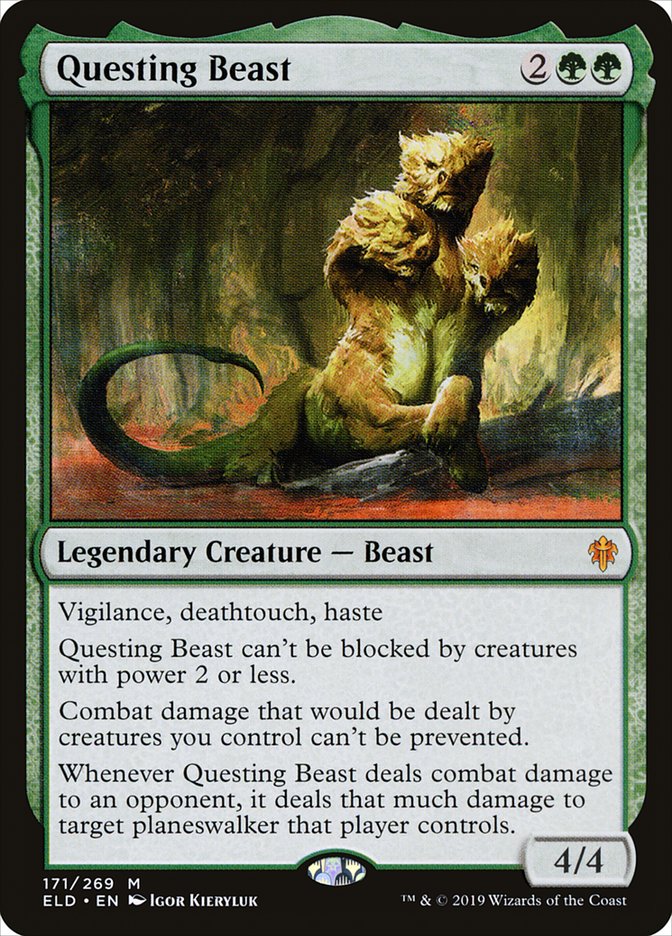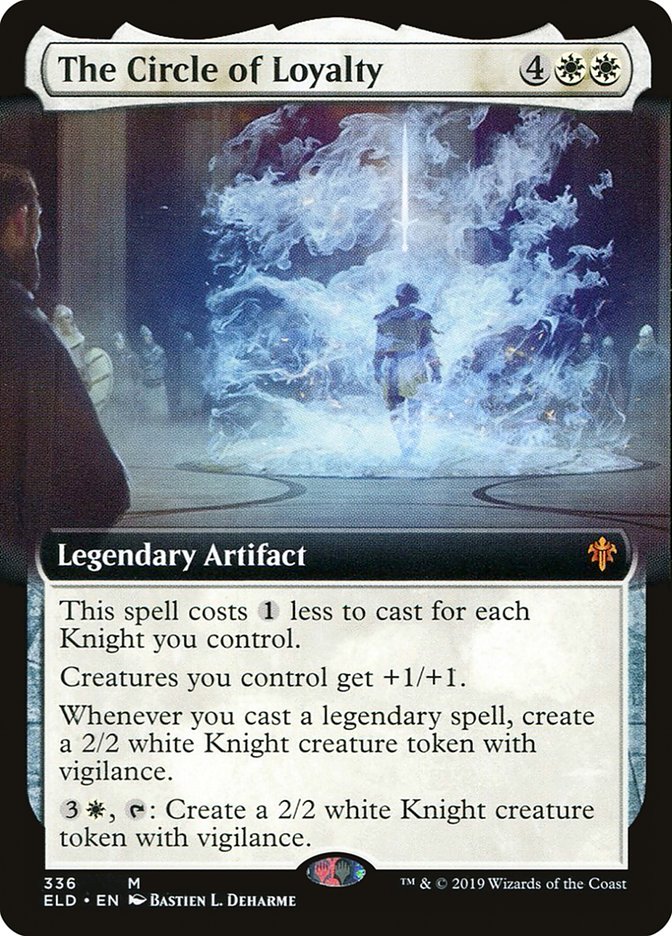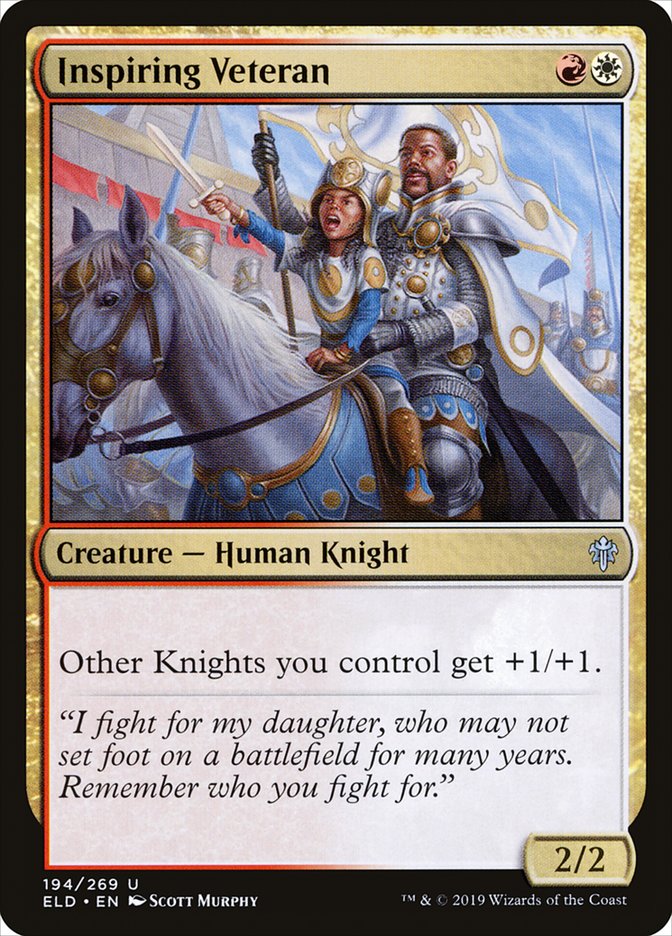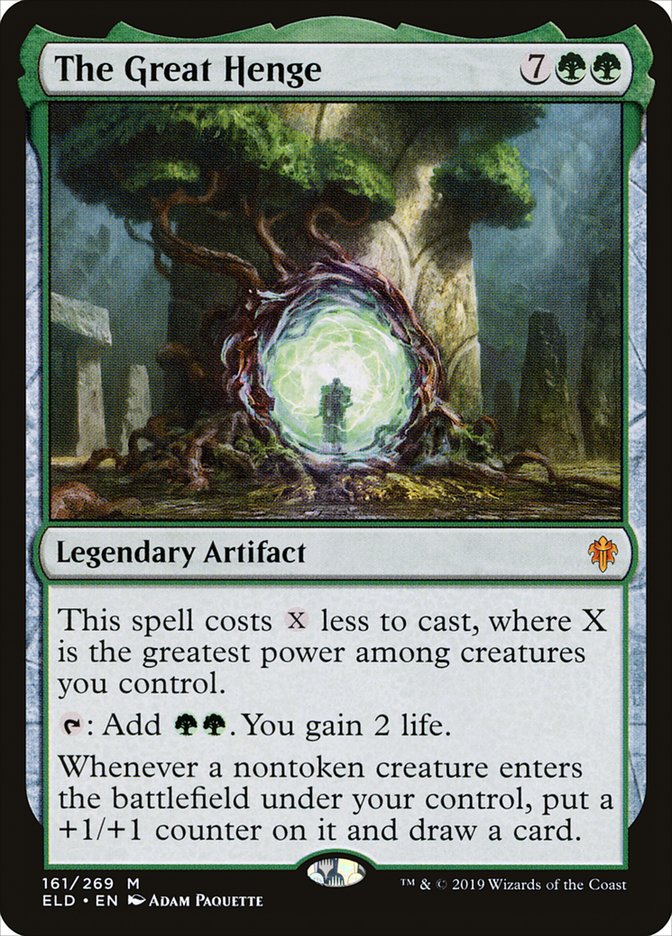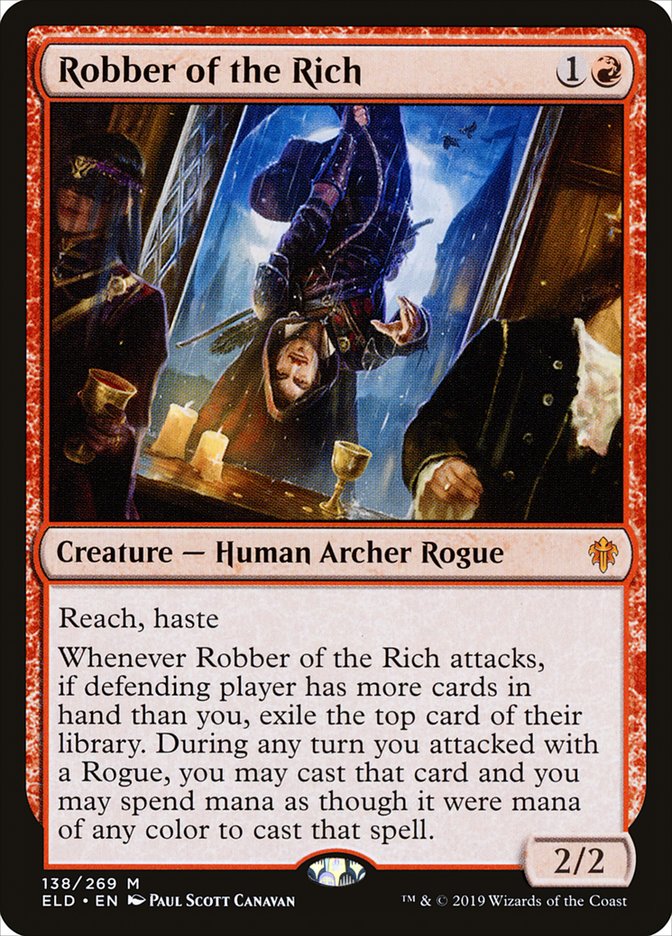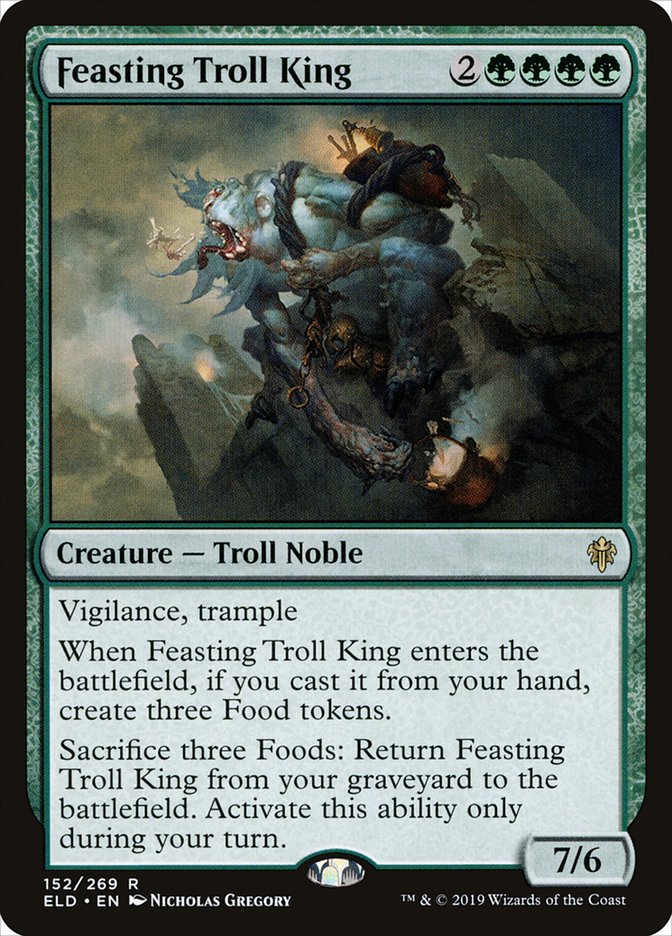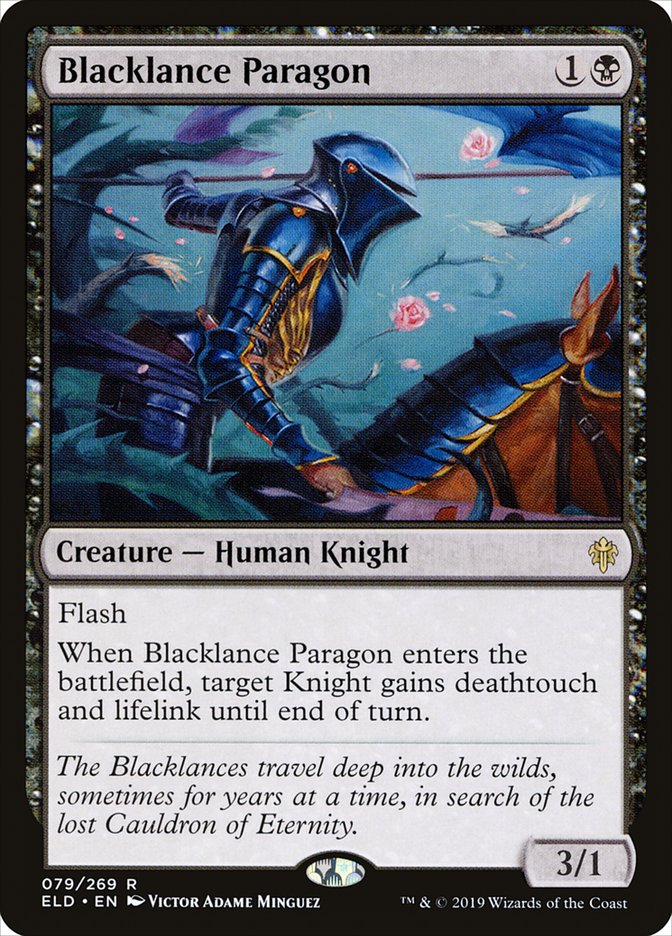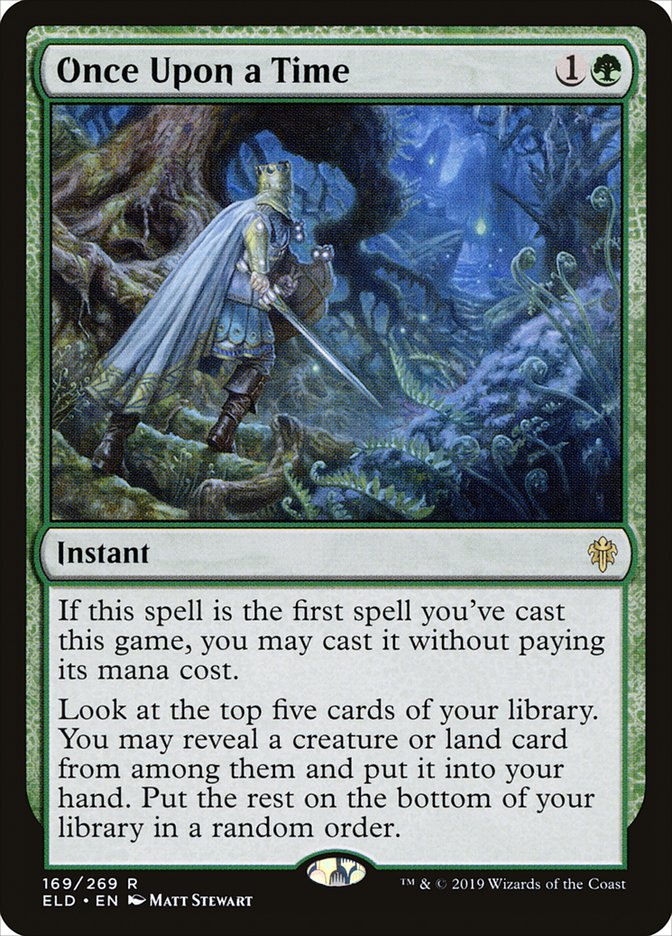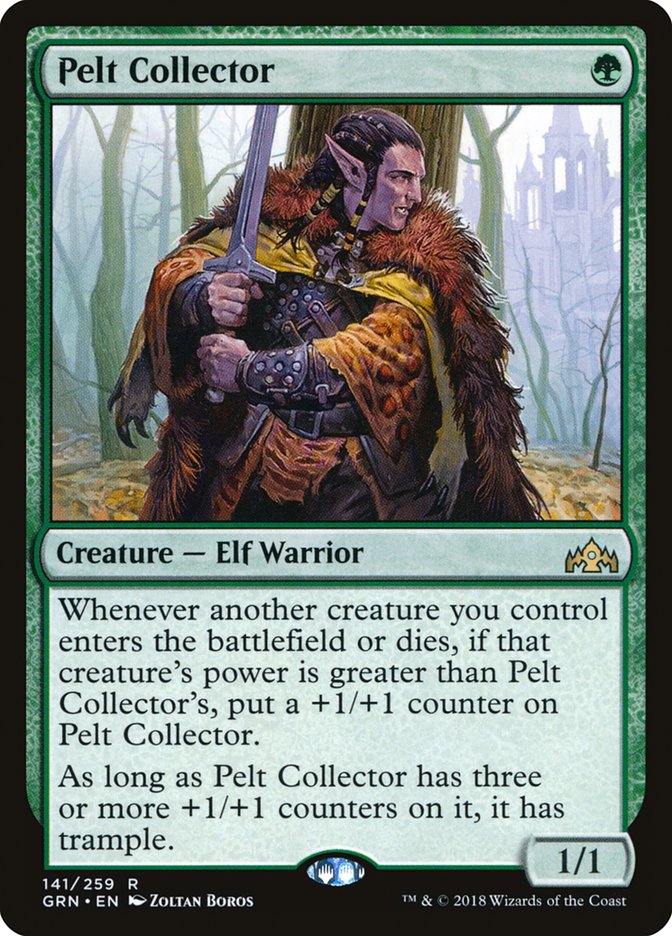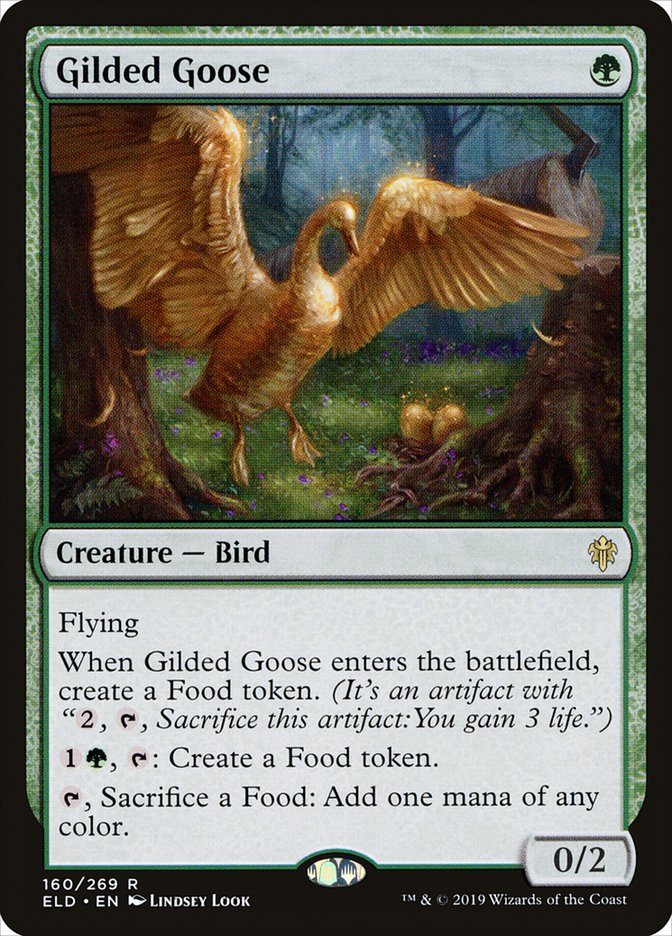Preview season for Throne of Eldraine is just about over, with the Team Constructed Open in Philadelphia mere days away, ready to unleash an admittedly powerful set on all three major Constructed formats. I, among many others, expect these cards to weave quite the tale of success in their inaugural run, but that doesn’t mean there are going to be some clunkers.
For every Siege Rhino and Jace, Vryn’s Prodigy, there’s a Skaab Ruinator or Aurelia’s Fury. Evaluating Magic cards is almost as difficult as designing them, and the game’s history is littered with instances of powerful cards living beneath the radar while the most-hyped cards fall flat on their face once the games are actually played.
We’ve now had some time to see these new cards in action and play with them ourselves, and in true curmudgeonly fashion, I’m here to tell you which cards aren’t up to snuff. Y’all have been blowing a lot of bubbles over the last few weeks, and I’m here to pop them. Let’s start with some honorable mentions:
This first one is a bit of technicality. I think Questing Beast is a great card, and one that will see plenty of play over its life in Standard, but it’s not the second coming of our favorite medically-trained pachyderm, Dr. Siegeman Rhinoceros MD. There’s a lot more text on Questing Beast, to be sure, but there’s diminishing returns on that text. Magic is not a Tolstoy novel, and at a certain point adding another keyword doesn’t change the fact that the card’s value comes from a body that isn’t too difficult to trade with, while most aggressive decks have an easy answer in Lava Coil.
The ability to pressure life totals and planeswalkers simultaneously is still a huge boon, but one that’s rather muted by the fact that both Oko, Thief of Crowns and The Royal Scions easily rise above four loyalty.
Questing Beast fits nicely into most midrange green decks because it’s just an efficient, individually powerful card. With haste, it’s also solid at the top end of the curve in aggressive decks and in aggressively slanted midrange decks. But it’s not the end all, be all of the color green in Throne of Eldraine Standard.
Any Card Containing the Word “Knight”
Any time you play a tribal deck you need two conditions to be met: first, enough powerful tribal payoffs to make committing to the tribe worthwhile, and second, enough reasonable creatures of the tribe to enable those payoffs.
In my experience, the Knight tribe falls a bit short in both respects. The Circle of Loyalty is rather powerful, but at its best against heavy-removal strategies when right now cards like Nissa, Who Shakes the World and Dance of the Manse are going over the top in long games. Inspiring Veteran is obviously good enough for Standard play, but isn’t enough to carry the tribe by itself, and with most of the good Knights concentrated in Orzhov, requires stretching your mana.
The best payoffs I’ve found are Worthy Knight and the innocuous Smitten Swordmaster, but both of those require a high density of Knights on a relatively low curve, which just doesn’t exist right now. Each color only has one quality one-drop, and the mana isn’t good enough to be stretched that far. I expect we’ll see some Knight decks pop up, but they won’t be a major player until the coming sets fill out the deck, the same way Vampires had to wait until last summer for its turn at the top.
Okay, let’s get to the top of the overrated heap:
5: The Great Henge
Of the cards in the Top 5, this is the selection I’m least confident in, hence why it’s at the bottom of the list. (We in the business call that a hedge.) This was one of the cards that received unilateral praise after the Early Access streamer event last week, and I’ve yet to hear a negative review since.
But here’s the thing: I’ve yet to see a deck with The Great Henge that received the same review. And when I’ve played the card, it’s been difficult to cast outside of times when I curve out well and untap with a commanding battlefield. It’s not hard to imagine draws where The Great Henge pulls you ahead from an even position, dominating the game with a stream of card advantage, especially in combination with Growth-Chamber Guardian.
But ultimately, The Great Henge only fits into heavy-green aggressive decks that are dense with creatures and thus low on removal and dependent on curving out consistently. If you miss the high part of the curve, then you won’t have a large enough creature to make The Great Henge castable, and if you miss the early part of the curve, then it’s too easy for your opponent to remove the larger creatures and once again, make The Great Henge prohibitively expensive.
This strikes me as a card that looks good in an unrefined metagame since its ceiling is quite high, but once things narrow you see its floor a lot more often, and for The Great Henge that means rotting in your hand.
4: Robber of the Rich
Robber of the Rich reads great. A 2/2 with haste for two mana isn’t out of range for an aggressive creature in Standard, and generating card advantage while attacking has a long history of success. I’ve seen plenty of Rakdos, Gruul, and Mono-Red Aggro decks featuring Robber of the Rich almost as a foregone conclusion, but the severe restrictions on this card worry me.
First, there’s the need to have fewer cards in hand to get a card. There aren’t a lot of great one-drops around, which means you have to be on the play in order to get a card on Turn 2. Robber of the Rich is much worse on the draw across the board, so it’s often going to be sideboarded out.
Second, you have to attack with a Rogue in order to cast the card you exile. Brazen Borrower helps there, but that’s just about it, and if the 2/2 dies in combat in order to cast the card it stole, how much advantage are you really gaining? And last, there’s the fact that it doesn’t let you play lands. So while it reads like you’re drawing a card with the trigger, you’re likely only drawing about three-fifths of a card.
So on the surface, Robber of the Rich is a 2/2 haste that draws a card each turn. In reality, it’s a 2/2 haste that some portion of the time draws three-fifths of a card a turn, and a lot of the time will die in the process. Honestly, I’d rather go with the simplicity of Zhur-Taa Goblin, especially in a deck with Pelt Collector, where the 3/3 body can grow the Elf more consistently.
3: Feasting Troll King
I’ve seen a lot of Hogaak, Arisen Necropolis comparisons for Feasting Troll King and I don’t see it at all. Unlike Hogaak, Feasting Troll King doesn’t have the benefit of enablers of the quality of Faithless Looting or Stitcher’s Supplier. Instead, you’re casting cards like Merfolk Secretkeeper and Giant Opportunity that otherwise wouldn’t touch a Standard deck. And the payoff is a 7/6 creature on Turn 3.
Rotting Regisaur is a Standard-legal Magic card. Three Swamps is all you need. You don’t get extra points for trying harder.
If you go deep enough you can set up some cool battlefields with Witch’s Oven protecting Feasting Troll King from exile-based removal, ensuring that it will keep coming back for more, but in a format with Hydroid Krasis and Dance of the Manse, an end-game that doesn’t scale as the game goes longer will eventually be invalidated by something more powerful.
And that’s the ceiling. The floor is putting a bunch of nonsense enablers in your deck and not actually finding a Feasting Troll King in time. In that case your entire deck does nothing. Some of the enablers can support other cards like Vantress Gargoyle and Emry, Lurker of the Loch can be a card-advantage engine, but those cards aren’t carrying a Standard deck in 2019.
Maybe with some better enablers a deck like this can come together, but Feasting Troll King isn’t a powerful enough payoff to fill your deck with a bunch of nonsense in order to take advantage of it.
2: Blacklance Paragon
I know I lumped every Knight into one category earlier, but Blacklance Paragon deserves special attention because I’m seeing it in non-tribal aggro decks. When you play this card aggressively, it’s basically Blade of the Sixth Pride.
Don’t put Devilthorn Fox in your Constructed decks.
Yeah, there are times when you get to target an attacker and take out a larger creature in combat, generating a small advantage by trading a larger creature up for a smaller one, but that’s not a particularly attractive ceiling and it requires having some other Knights to target. Ideally it will target a Knight with first strike so the blocker dies cleanly, but Fervent Champion is not a card I want in my deck.
Sometimes you’ll get some benefit from the flash ability, but these aggro decks don’t have much to do at instant speed, so you’re not gaining much versatility. There just isn’t much upside on top of Blade of the Sixth Pride here, so I don’t understand the card’s current popularity.
Oddly enough, I actually think Blacklance Paragon fits best in a more defensive deck, where you can use it as a Kill Shot of sorts by targeting itself mid-combat. Normally removal spells that only target attacking creatures are awkward, but the extra three life from lifelink is significant upside, as are dodging Duress / Negate and the ability to pressure opposing planeswalkers.
But I have yet to see Blacklance Paragon in that context, and until that happens, the card will continue to be a glorified Dromoka Warrior.*
* I planned to fit in a reference to every vanilla 3/1 for two mana in this section, but there are a lot of them and I just didn’t have that much to say. Yet another way in which Blacklance Paragon has failed to meet expectations.
1. Once Upon a Time
Not only is Once Upon a Time the most overrated card in the entire set, it’s the most overrated card since Aurelia’s Fury, which was pre-ordering for $30 despite not being the least bit playable in any competitive Constructed format.
But Ross, free spells are broken!
Yeah, I know that. But obviously that line is an oversimplification. Memnite is free and you don’t see it as a four-of in every deck in which it’s reasonable. There’s a bar here, and Once Upon a Time fails to meet it.
There’s no denying that the free copy of Once Upon a Time is a valuable card. At no cost it improves your hand, making it much easier to curve out, which is very important in Standard. In Modern, it makes decks like Neobrand more consistent, which is the metric it needs to improve on to compete.
In the late-game, it’s a reasonable topdeck, though not finding planeswalkers or removal spells limits its potential.
The problem is when they clog your hand in the mid-game, a time when you want to be interacting with the battlefield and instead Once Upon a Time offers a mediocre cantrip. So the question becomes whether the upside of a free cantrip in the early-game is worth the high diminishing returns, and in my experience the answer is a resounding no.
At first I thought decks with key one-mana plays like Pelt Collector or Gilded Goose would like the added probability of finding the card, but those are the decks that least want the mid-game cantrip, so on the whole it’s a wash. I could see these decks playing a single copy, since that gives you the greatest chance of having it early per deck slot used while also minimizing the downside, but that would be a huge downgrade from its current evaluation.
Even in Mono-Green Tron I don’t see Once Upon a Time living up to the hype. It doesn’t find Oblivion Stone or either Karn planeswalker, so it’s generally going to be used to more consistently find the UrzaTron, but it’s only good at doing that as a free spell.
Once Upon a Time is a classic case of evaluating the ceiling of a card without considering how often the ceiling is realized relative to the floor. Most copies of Once Upon a Time will be cast using mana, and the ceiling on a free but mediocre cantrip isn’t high enough to make the two-mana version worthwhile.
The card isn’t a complete dud, but it’s not the multi-format all-star it’s being painted as. Once Upon a Time requires a specific shell that maximizes the ceiling of a free cantrip on Turn 1 or 2 or really wants a mediocre cantrip for two mana. Neobrand is one such shell, but I don’t see many others right now.
Now, if you’ll excuse me, my hot take cannon needs cleaning. Get off my lawn, go home, and good luck in Philadelphia…I guess.


